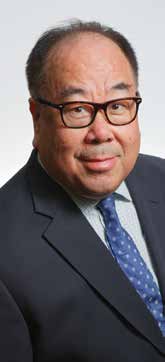In his latest column for Inside Asian Gaming, Dr Brian To examines the key factors organizations must consider when it comes to training employees to maximize their potential. By Professor Dr Brian To
Bringing out the best in every employee continues to be a priority for all organizations, even though most invest very little in employee development – namely helping employees understand themselves and others so that personal experiences can influence or positively affect productivity and profitability.
Although more and more companies leave employees to train themselves through endless newsletters, mandated online courses and perpetual policy notices and standard practice instructions (SPIs), few if any of these methods and systems work to inspire, motivate or encourage employees to perform at a superior level each day.
In fairness, however, these methods can serve to inform or update – but only if newsletters are being read or online training courses truly understood. Perhaps blended learning models might prove to be more effective? After all, could a surgeon really learn the latest surgical and technological techniques from an online course effectively? And would you want that surgeon to work on your loved ones?
Essentially, questions such as this must include, “How can we boost employee productivity without a human resource development strategy? Can innovation be managed as a business priority and process? And how can we involve our employees in the innovation process, particularly since our business survival depends upon innovative and differentiated pursuits and services?”
Employee development quite clearly must be treated as an investment. For any organization dependent upon leadership for continued success, the pillars of the organization’s culture will inevitably include both personal and professional effectiveness.

Could Macy’s employee layoff program have been avoided?
Almost all studies in human resource retention suggest the importance of continuous employee development initiatives, rather than just the size of the pay packet, in ensuring successful retention. Having a deep talent pool must be the premier human resource priority, but it’s also crucial to have the ability to attract, nurture and provide a platform to support and advance employees with the right attitude, skills and tools to be able to contribute.
Needless to say, the most senior talent management leader in the organization should have a seat at the senior executive table. It is common knowledge in most progressive organizations that having a focus on learning differentiators and unique experiences for employees is just as important as any other factor in training and retention.
This is particularly crucial in those regions which are experiencing a work force that is ageing and whose productivity can be stimulated by having distinctive experiences in their work. These may simply be increasing cross-training opportunities, increasing cross-pollination, temporary or similar term assignments, job sharing and mentorship programs or contact with customers via sales, marketing and consumer service visits.
The future fitness of our organizations is dependent on our ability to view our employee development initiatives as being critical to our sustainability in the hypercompetitive environment in which we live and operate today.
One final employee development question is, “Have we prepared our organizations to manage competitive change” or “How best to manage the unexpected?” Just ask Macy’s, the giant US retailer that recently announced a 10,000 employee layoff program.
At the end of the day, employee development still comes down to one simple fact – “develop or die.”
 |
Professor Dr Brian To is a global strategist and senior practice professor with over six advanced degrees in business, management, policy, Chinese business and managing change. He consults to several Asian governments and militaries, Fortune 500 corporations and ultrahigh net worth individuals and their family-owned businesses in Asia and North America. Brian presently coaches several country leaders, corporate CEOs and entrepreneurs focused on personal and professional effectiveness and revenue expansion strategies. He can be contacted at bto@post. harvard.edu |




























